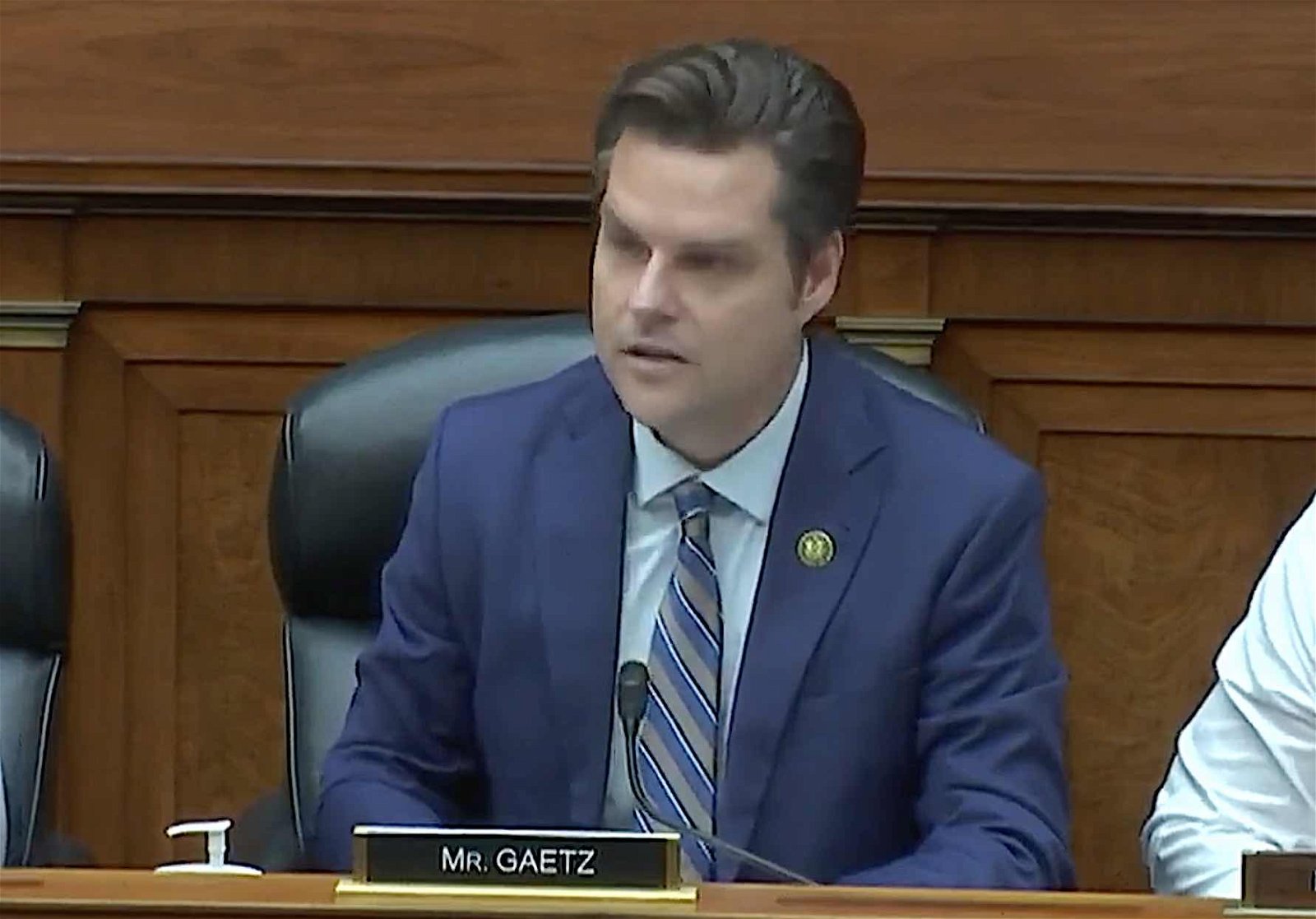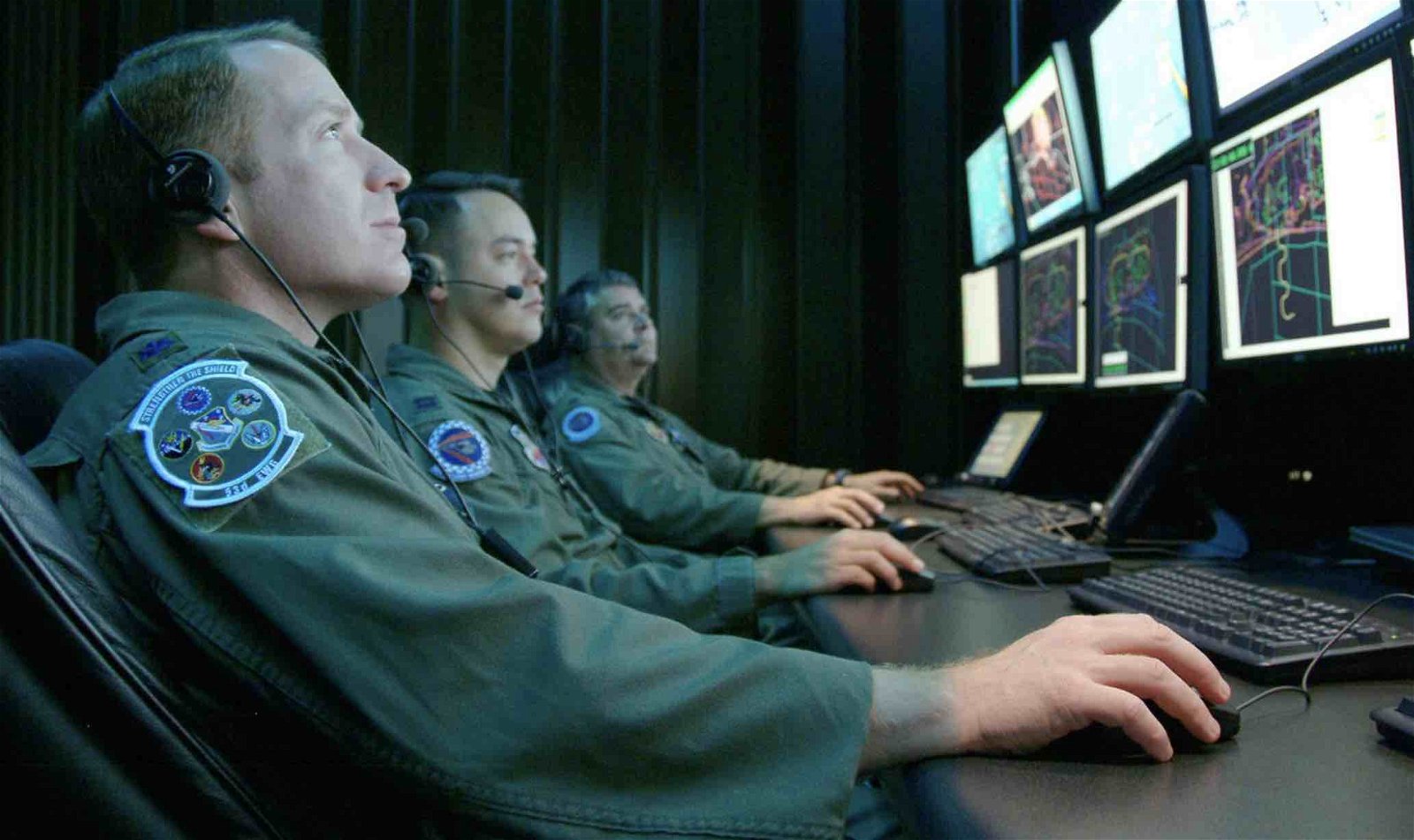Congressman Matt Gaetz (R-FL) says he was recently shown evidence of unidentified anomalous phenomena by military personnel that included a UAP image he was “not able to attach to any human capability.”
Gaetz revealed details about the incident during a widely viewed Congressional hearing on unidentified anomalous phenomena Wednesday morning.
Held by the Subcommittee on National Security, the Border, and Foreign Affairs, the hearing featured witnesses that included two former U.S. Navy pilots, Dave Fravor and Ryan Graves, as well as a former intelligence officer turned whistleblower named David Grusch.
Gaetz was reportedly shown the image several months ago during a visit to Eglin Air Force Base, Florida, where he was accompanied by Rep. Tim Burchett (R-TN) and Rep. Anna Paulina Luna (R-FL).


“Several months ago, my office received a protected disclosure from Eglin Air Force Base indicating there was a UAP incident that required my attention,” Gaetz later wrote in a post on X, the social media site previously known as Twitter before its recent rebranding by Elon Musk.
Gaetz says that after learning of the incident, he requested a briefing on the situation and brought Burchett and Luna along with him during a visit to the base.
“We were initially denied access to images, radar, and conversation with all members of the flight crew,” Gaetz said. However, after the initial denial, additional demands by the Representatives for the release of imagery resulted in Gaetz being allowed to see a photograph captured by a member of the flight crew involved in the UAP encounter.
Gaetz said that he was the only one who was shown the UAP image, and that he was allowed to speak directly to the pilot who took the photo afterward.
“The image was of a UAP that I am not able to attach to any human capability,” Gaetz wrote, “either from the United States or from any of our adversaries.”
According to Gaetz’s account, the pilot had reportedly encountered what he characterized as a fleet of four UAPs “flying in a diamond formation” while conducting training exercise over the Gulf of Mexico.
The visual observations were also corroborated with radar data that personnel at Eglin Air Force Base allowed Gaetz to review.
“There is a radar sequence that I, and I alone, have observed in the United States Congress,” Gaetz said during Wednesday morning’s hearing.
According to the account the pilot provided Gaetz, as he went to investigate and came in near proximity to the objects, the approach of the UAPs apparently caused his radar system and Forward Looking Infrared (FLIR) to malfunction, requiring him to have to rely on manual controls in order to obtain an image of the UAP.
When attempting to characterize the object he observed in the pilot’s photo, Gaetz said it resembled “what I can only describe as an orb,” adding that it did not appear to be “of any human capability that I’m aware of.”
During Wednesday’s hearing, Gaetz asked witness Dave Fravor how incidents where UAP appear capable of disarming onboard systems on military aircraft should be addressed.


“I think this goes to that national security side,” Fravor said. “And you can go back through [the] history of things showing up at certain areas and disabling our capabilities, which is disheartening.
Fravor added that footage obtained by Chad Underwood, at the time the Weapons System Officer on board a F/A-18 Super Hornet who captured FLIR imagery of the famous Tic Tac during a widely-discussed 2004 incident, “completely disabled the radar on the aircraft.”
“The only way [Underwood] could do it was passively, which is how he got that image,” Fravor said on Wednesday.
In the past, instrumental disturbance of onboard electronics is a feature commonly reported during pilot UAP encounters. A 2021 investigation by The Debrief revealed several incidents where aviators reported UAP encounters where objects passed dangerously close to their aircraft, which included cases where instrumental disturbances occurred.
One 2013 incident uncovered by The Debrief, initially reported to NASA’s Aviation Safety Reporting System, described an object that “looked like a flat black bar with squared off edges and was extremely long and rigid” that quickly moved beneath a Piper PA-28 Cherokee departing from Joliet Regional Airport (JOT), Illinois, narrowly avoiding a head-on collision.
Following the near midair collision, the pilot and copilot soon began to observe the plane’s fluid compass “dip violently in quasi-rhythmic pulses” while the aircraft’s azimuth “oscillated 20 degrees left and right of course.” Shortly thereafter, the altimeter also seemingly began to malfunction for a period before eventually returning to normal operation.
“We don’t know and will probably never know what my co-pilot saw,” read a portion of an official report filed by the pilot, “or whether it had anything to do with the anomalies we experienced.”
Currently, the All-domain Anomaly Resolution Office (AARO), the Office currently in charge of the Pentagon’s UAP investigations, says it is working with more than 800 reports involving sightings of unidentified objects, many of them observed by pilots.
“It was stated explicitly to me by these test pilots that if you have a UAP experience, the best thing you can do for your career is forget it and not tell anyone,” Rep. Gaetz said of the recent incident during Wednesday’s hearing, acknowledging the stigmas that have long prevented pilots from reporting their encounters.
“Because any type of reporting, either above the surface or below the surface, does have a perceived consequence to these people.”
“And that is a culture we must change if we want to get to the truth,” Gaetz said on Wednesday.
Micah Hanks is the Editor-in-Chief and Co-Founder of The Debrief. He can be reached by email at micah@thedebrief.org. Follow his work at micahhanks.com and on Twitter: @MicahHanks.

